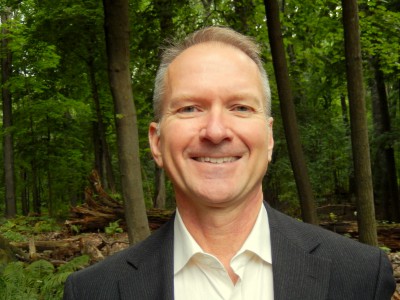The Perils of Popular Demand Science
Some healthcare researchers are finding themselves in a similar predicament as investigative journalists. The results of their research may, at times, support unpopular conclusions. As social media eclipses professionally edited sources of information, there is a diminished public appetite for objective, professionally-conducted studies. Investigative journalists are under attack in many parts of the world, especially in countries with authoritarian governments. These attacks have, at times, become violent. Could scientists encounter this as well?
Earlier this year, Kate Kelland of Reuters published an excellent report entitled “Online activists are silencing us, scientists say”. She looked at the backlash against research on chronic fatigue syndrome (CFS). Similar to how many patients (and plenty of physicians) conceptualize chronic pain, there is a public constituency that craves medical explanations for their suffering.
“Many researchers cite evidence that talking therapies and behavioral approaches can help in some cases. Yet some patients and their advocates say this amounts to a suggestion that the syndrome might be a mental illness or psychosomatic, a notion that enrages them. They would prefer that research efforts focus on identifying a biological cause or diagnosis.”
Investigators who evaluate physical therapy or cognitive-behavioral interventions for CFS have been defamed online. In the assessment of Michael Sharpe, Professor of Psychological Medicine at Oxford, the result of this polemic is that “patients are the losers here”. He is among the investigators interviewed. All are attempting to come up with solutions for chronic fatigue; Sharpe describes how public forums have become “toxic”. Criticisms of unwelcome scientific evidence deter investigators from conducting studies. Kelland notes the decline in clinicaltrials.gov listings on CFS. There are fewer studies on CFS in progress. Cochrane (formerly Cochrane Collaboration), a British charity that compiles comparative evidence on healthcare treatments, has chosen to withdraw its content on CFS.
Solid scientific research methods produce public health benefits. Prior to the 1964 (US) Report on Smoking and Health, the risks of smoking tobacco were not widely accepted. Cigarettes were popular, not to mention addictive, aggressively marketed, and profitable. Hard science, compiled in this Report, argued against this demand. By 1968, Gallup reported that 78% of USAmericans thought smoking caused cancer.
Although the topics have changed over time, a similar dynamic appears to be playing out now. During the 1990’s, in the absence of solid scientific investigations, public demand for opioids resulted in an epidemic of addiction. Most physicians looked at chronic pain as a purely medical condition, thus managed by medication. They were attracted to a medical explanation, cast in terms of a disease. Together, physicians and patients were wedded by the notion of medications as a principle form of treatment. Too many patients unwittingly became opioid-dependent and disabled as a result.
Scientific research could have averted the ensuing catastrophic epidemic of opioid-dependence. The evidence for any benefit from long-term opioid use was always flimsy. The absence of good research wasn’t appreciated by suffering patients, or by many physicians, who became eager-to-prescribe “something”. Hard scientific evidence was lacking. Manufacturers wouldn’t sponsor studies that could demonstrate negative impacts from their products.
During the same era, the Agency for Health Care Policy and Research (AHCPR) produced evidence showing that physical therapy (PT) and chiropractic care were often comparatively more successful at resolving back pain than surgical interventions. Many orthopedic surgeons were displeased, and funding for AHCPR was zeroed-out. Scientific evidence wasn’t lacking to support PT or chiropractic, but it was suppressed.
The insistence on a medical model, and resistance to acknowledging behavioral, cognitive or affective factors results in reliance on weaker studies, ones which favor medical treatments. During the 1990’s, one small study (n=38), only published as a letter by Portenoy, was used to justify chronic opioid use for non-malignant pain. Controlled outcome research on the impact of opioids on pain and disability was simply not popular. Had there been more reliance on scientific results, the public would have been better served.
As with tobacco, traditional media was reluctant to report on the detrimental impact of long-term opioid use, relying as they do on commercial revenue from advertising. Manufacturers can deftly exercise public relations methods to evade governmental oversight. (For more on this, look for the biography of Edward Bernays, the ‘father’ of Public Relations, by Larry Tye.)
Since 2000, the rise of social media has intensified this dynamic. Careful scientific research has always been ponderous and slow, as well as expensive. Social media communications (tweets, postings, etc.) are fast and cheap. Added to this, their volume threatens to obscure the impact of scientific evidence. Consequently, if it’s unpopular to believe a fact, social media can serve to make it functionally untrue.
What further calamities are currently lurking in the shadows? Healthcare researchers must occasionally delve into topics that certain constituencies will dislike. What if “medical” marijuana produces detrimental impacts that a lot of people would more happily ignore? When are branded pharmaceuticals being improperly administered for problems in living? Are there overlooked and effective methods to alleviate mood disorders or attentional deficits, ones that might not jibe with chemical theories? Healthcare researchers must account for popular demand as a potential threat to sound research design, lest it becomes a source of bias.


Write a comment